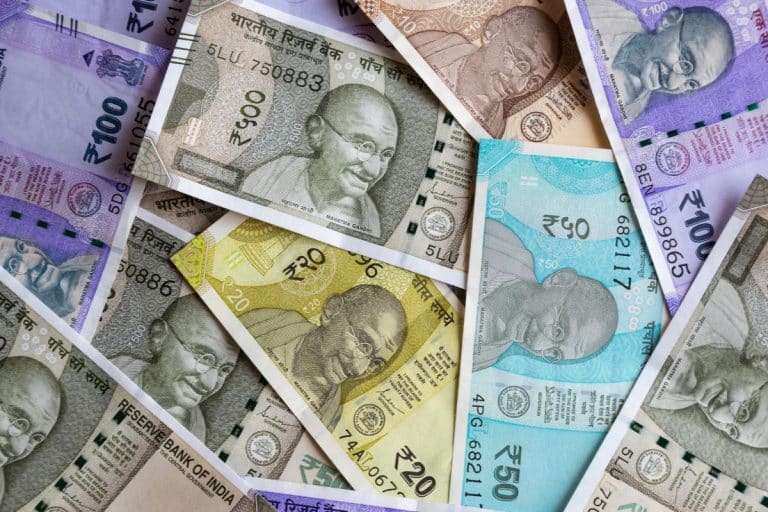Indian rupee plunged to an all time low of INR 82.70 against US dollar a piece on Monday morning trading hours, with currency market experts predicting further weakening of the Indian currency in near-term basis.
The rout in rupee is seen to be pushing up expat Indian remittances, especially from the Gulf region, as they can earn more bucks for each dollar remitted.
Anticipation of aggressive tightening by the US Federal Reserve and predictions of crude markets ending this week with major gains are major factors said to be pushing down the exchange value of the South Asian country currency.
Rupee fell 0.47 percent in the early morning trade from its Friday closing of INR 82.33 against the greenback.
“The rupee hit fresh record lows due to rising oil prices, coupled with the hawkish statements by top US Fed executives,” Ajay Kedia, managing director of Kedia Commtrade and Research, told Arabian Business.
“If the oil again jumps above $100 per barrel, it will surely ring alarm bells and further stress the deficits [of India’s trade account] and the rupee,” Kedia said.
“We expect the USD-INR pair to trade higher in a range of 81.80 to 83.50 for the next few weeks,” Kedia said.
On Friday, US Federal Reserve Governor Christopher Waller and Lisa Cook said the Fed needs to keep raising interest rates into early next year to bring down stubbornly high inflation.
Analysts said the surprisingly low US unemployment rate in September implied that the Fed will have to continue raising interest rates longer than the markets had discounted.

Edelweiss Wealth Research said in a recent note that emerging pressure for crude oil prices, sustained strength in the US dollar and volatile foreign fund flows would weigh on the Indian rupee.
“The weakness in the INR against the USD is to prevail and we expect it to move in the range of 82 to 83.15 a dollar this month,” Edelweiss said.
Historically, the weakening trend of rupee led to a surge in non-resident Indian (NRI) remittances to the South Asian country.
The onset of festival season in India from September onwards generally sees high NRI remittances, especially from the Gulf region. With the current sharp fall in rupee value, banks and money exchange firms expect a further rise in remittances this time around.
NRIs based in the Gulf region account for a larger chunk of expat remittances to India.
In another setback for India’s efforts to prop up its currency value, large Indian lenders are reluctant to process direct rupee trade transactions with Russia months after the mechanism was put in place by India’s central bank, according to a Reuters report.

This will be good news for Middle East oil producers as India’s move on local currency settlement was seen as mainly for importing discounted crude offered by Russia in the wake of Western economic sanctions over its invasion of Ukraine.
Two smaller lenders have moved to adopt the system after the Reserve Bank of India (RBI) said in July that it had set up an arrangement for international trade settlements in Indian rupees with immediate effect.
But bigger lenders with more exposure to the international financial system, and in particular the dollar, are worried their businesses could be disrupted if targeted by sanctions.








